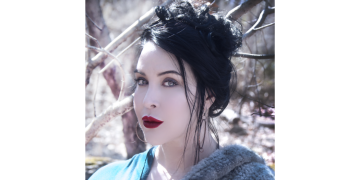Ryuzo Yanagimachi, whose long career as a pioneer in fertility research culminated in 1997 with the successful cloning of multiple generations of mice — a leap ahead of the announcement of the first cloned mammal, Dolly the sheep, just months earlier — died on Sept. 27 in Honolulu. He was 95.
His niece Keiko Kindstrom said his death, at a nursing facility, was caused by complications of a fall.
Dr. Yanagimachi was already nearing retirement in 1998 when he and his team at the University of Hawaii announced in the journal Nature that, a year before, they had successfully cloned not just one mouse but dozens, across multiple generations.
Dolly, the result of work by Ian Wilmut of Scotland, still dominated the news, but in many ways it was Dr. Yanagimachi’s work that was the real breakthrough. (Dr. Wilmut died in September.)
Dr. Wilmut and his team used a procedure that essentially starved an adult cell to the point where it went into hibernation, then removed the nucleus of an embryonic cell and replaced it with that of the starved cell. It was, he admitted, a crude process that took hundreds of attempts to get right.
Dr. Yanagimachi used a much more elegant technique, developed with one of his postdoctoral students, Teruhiko Wakayama. Instead of starving an adult cell into hibernation, they looked for cells that were already in that state naturally. They settled on cumulus cells, which surround the egg.
He named the first mouse, a female, Cumulina; by the time he and his team announced their work, they had nearly 70 specimens, all female. Seven were even clones of clones, something previously thought unimaginable. Overall the so-called Honolulu technique achieved a success rate of between 2 and 3 percent, significantly better than Dr. Wilmut’s.
Dr. Yanagimachi’s work showed that Dolly was not, as many scientists had suspected, a fluke. In 1999 he and his team announced that they had cloned a male mouse, which they named Fibro. For a moment it seemed as if cloning was not just the future but, increasingly, the present.
Dr. Yanagimachi, however, was skeptical. He always said his work on cloning was a byproduct of his other fertility research, and he warned that cloning, especially human cloning, was dangerous and morally fraught.
“If all the humans on the face of the earth were infertile, this may be justified,” he told The New York Times in 2001. “But until then we should stick to reproduction the way that Mother Nature did it for us.”
Ryuzo Yanagimachi was born on Aug. 27, 1928, in Ebetsu, a city on the Japanese island of Hokkaido, and raised in nearby Sapporo. His father, Hisazo, owned a post office; his mother, Hana, was a homemaker.
He attended the University of Hokkaido, where he received a bachelor’s degree in zoology in 1953 and a doctorate in animal embryology in 1960.
He was a model student, but he despaired of finding an academic job in his specialty, aquaculture; at the time, Japanese universities were clubby and opaque, with jobs often being given, unannounced, to pre-selected candidates.
He looked abroad, and in 1960 he found a postdoctoral position at the Worcester Foundation for Biomedical Research in Shrewsbury, Mass. Though his background was in fish fertility, he ended up working primarily with mammals, in particular with hamsters. In his first few years he pioneered in vitro fertilization techniques, advances that made possible the I.V.F. revolution of the 1980s.
With his fellowship in Massachusetts ending, he tried to return to Japan but once again found himself shut out. He accepted a position at the University of Hawaii in 1966 and remained there the rest of his career.
Dr. Yanagimachi retired in 2005 but was still working as an emeritus professor up to a few weeks before his death.
He married Hiroko Ono in 1959. She was a child psychologist in Japan, but because of her low proficiency in English, she could not find similar work in Hawaii. Instead, Dr. Yanagimachi trained her as a microscope technician in his lab.
She died in 2020. Dr. Yanagimachi leaves no immediate survivors.
Until his cloning breakthrough made him a celebrity, Dr. Yanagimachi labored in a converted warehouse on a corner of the Hawaii campus, about two miles from his house. His work ethic was famous among fertility researchers worldwide; he was in his lab 12 hours a day or more, seven days a week, for decades.
Thanks to funding opportunities that poured in after the announcement, he was able in 2000 to found the Institute for Biogenesis Research at the university’s school of medicine.
He was a member of the National Academy of Sciences and, earlier this year, received the Kyoto Prize, Japan’s highest private honor, for his work. Still, he remained modest about his achievements.
“I consider myself mediocre,” he said in a 2014 interview with the journal Andrology. “The only thing I know of myself is that I like asking stupid questions. Nine out of 10 questions I made and continue to make were/are stupid or nonsense. Yet one out of 10 proved to be good.”

























